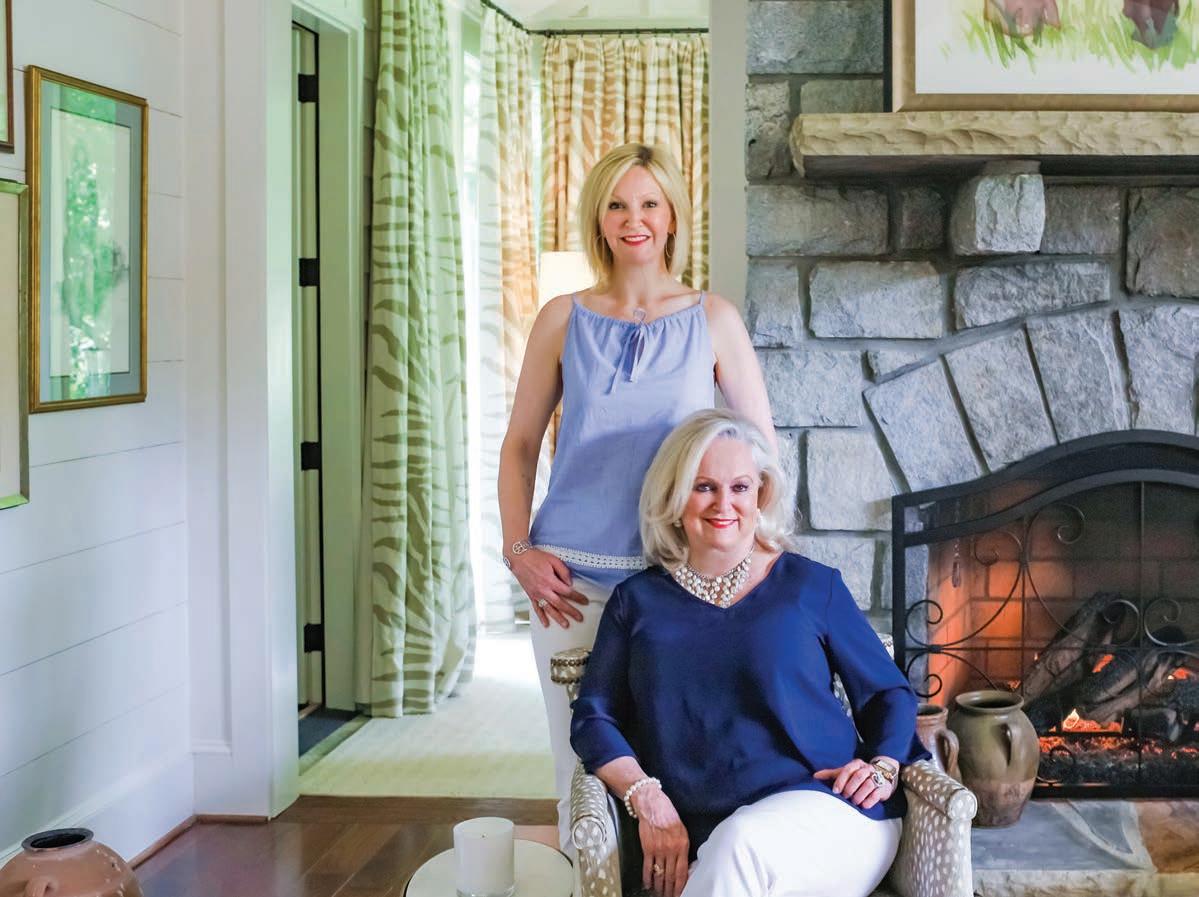
22 minute read
The Dynamic Pat & Julie Duo
Julie Osborn and Pat Allen
Even in business, the relationship between Pat Allen and her daughter, Julie, is predicated upon love.
Perhaps no relationship is as highly charged or has been more explored than that of a mother and daughter. At its best, the mother-daughter dynamic can be as close as two humans can get.
But what happens when you throw business into the bond?
Two women who have successfully navigated that path are local realtors, Pat Allen, and daughter, Julie Osborn.
They recently shared their story with me. The secret to the success of their relationship and business is revealed in their conversation and obvious rapport.
From the moment she was born, Julie and her Mom had a close relationship. So perhaps it’s not surprising that they ultimately went into business together.
Julie recalls that the two were very involved in their church in Macon, Georgia – attending Sunday School every Sunday, church both morning and evening, and Wednesday night suppers.
Favorite memories of her time with Mom include digging for sand dollars with their toes at the beach, picnics in the park, and scuba diving in the Caribbean. She jokes about the sandwiches Pat packed in her school lunch boxes – the “most awful peanut butter sandwiches ever; the peanut butter spread so thin because Mom was afraid I would gain weight. But, worst of all, she always took a bite out of the corner – I guess so I would remember her.”
The pair talk sweetly about their mutual love for Pat’s second husband (also named Pat), whom Pat married when Julie was 12 years old. The three were inseparable from the beginning, traveling and goofing off and dancing to the “Phantom of the Opera” or just spending quiet time at home.
As Julie reminisces, “He was the best thing that ever happened to me.”
When Julie was a child, Pat befriended an older woman, a deaf-
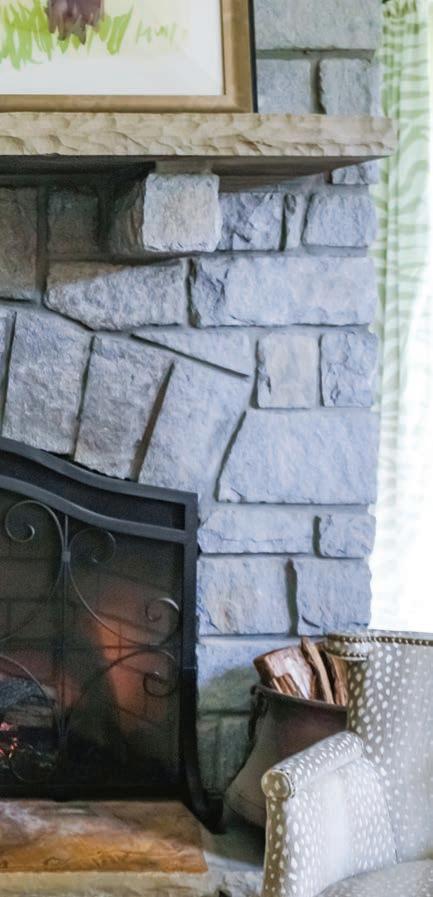
Pat and Julie, 1977
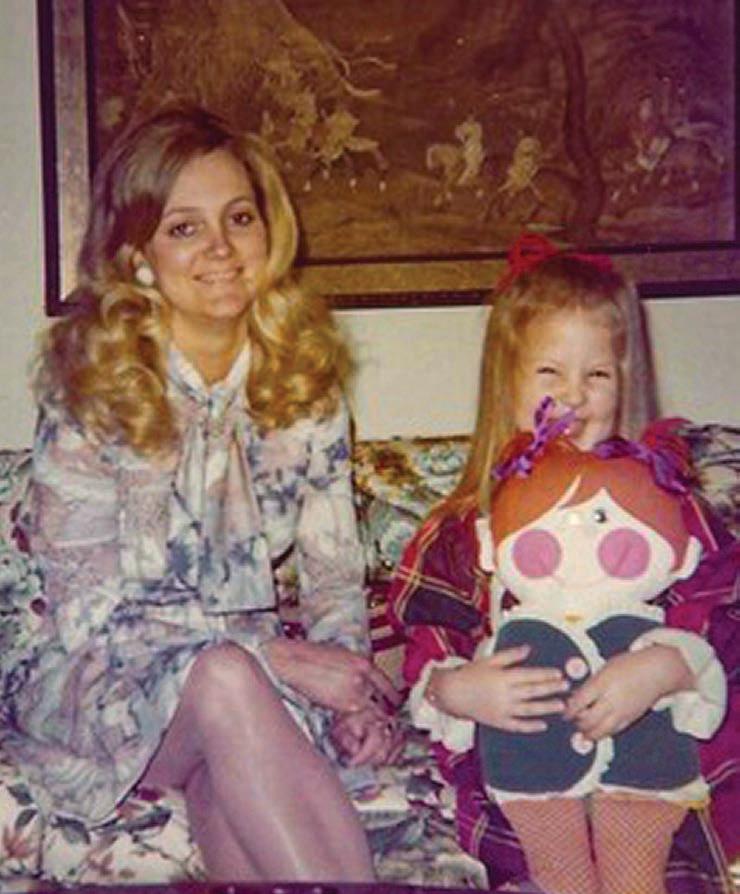
mute whom she had met while working in the hospital, and Julie accompanied her Mom on twice-weekly visits to the nursing home. The experiences formed the basis of a lifelong love of older people and a career in health care. Julie became an Occupational Therapist, and for 10 years, worked for the Mayo Clinic in Jacksonville, Scottsdale, and Rochester, helping the disabled and elderly.
Twenty-seven years ago, Pat and her husband Pat moved to Highlands and opened a B & B – the Morning Star. Seven years later, they sold the Inn.
Taking inspiration from her former career as a decorator, Pat became a realtor.
In 2007, Julie made a similar career move when she moved to Atlanta and got a job with Harry Norman Realtors. When telling her Mom of the decision, she remembers that Pat remarked, “You will never have another day off in your life.” And then, in 2014, Julie joined Mom at work at Pat Allen Realty.
Their working relationship has been, as Julie tells me, “a good fit. I’m the analytical and organized one while Mom is creative and a great salesperson. And we both have a gift with people.”
They occasionally butt heads, “because we’re both so independent.” But while their work lives overlap, their private lives are very different. They maintain separate residences, and Julie, the more introverted of the two, spends her free time reading, exercising, traveling, and spending time with her dog.
Pat does not stay home a lot and enjoys dinner out with friends, especially wine dinners, and going to plays and concerts.
As Julie likes to say, “Mom’s always been fun; it’s like working with Lucille Ball.”
Their hard work together has paid off. Pat and Julie were the Number One sales team for Highlands and Number 12 in the entire state in residential sales.
by Marlene Osteen
Are trust services right for you?
If you’re extremely busy with your career and family and you’ve accumulated a fair amount of assets, you might be concerned about a variety of issues related to financial management and legacy planning. Specifically, you might think you don’t have the time or expertise to deal with these matters effectively. If this is the case, you might want to consider using a trust company.
You might think you need to have a large estate or millions of dollars to benefit from working with a trust company, but that’s not the case. And if you’re not familiar with what a trust company can do, you might be surprised at all the services it can provide, including the following: • Wealth management – Typically, when working with a trust company, you’ll receive investment management designed to help you achieve various goals, such as a comfortable retirement and college for your children. The company can manage retirement accounts, monitor investments and disburse funds, make changes as needed, and ensure compliance with government reporting for contributions, withdrawals, and rollovers. While different companies operate in different ways, you may have an arrangement in which you work with a personal financial advisor and a separate portfolio manager. • Financial management during incapacity – If you were to become incapacitated and couldn’t make financial decisions, a trust company can step in, giving you peace of mind from knowing that your financial assets will be managed by a team of professionals, helping protect you and your family from potentially dire consequences. • Trust administration – A trust company can perform several essential tasks related to administering your trust. The company can act as trustee for a trust you’ve established, such as a revocable living trust, which can allow your estate to avoid probate while providing you with great control over how your assets will be distributed at your passing. Alternatively, the trust company can work alongside an individual you’ve designated to execute the terms of a trust.
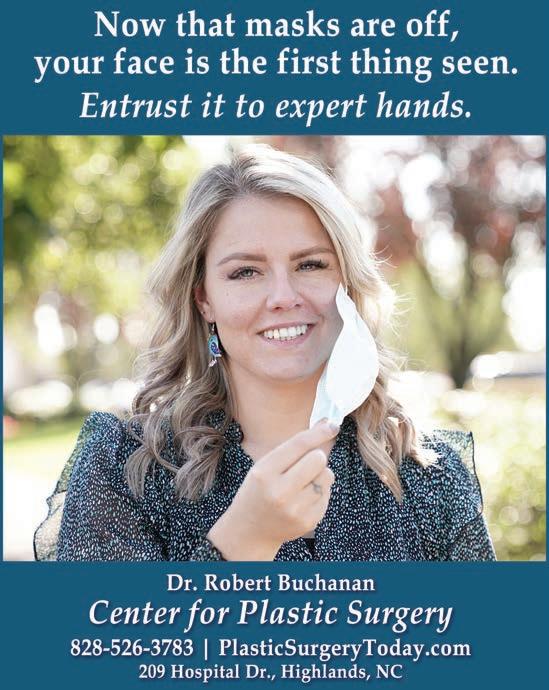
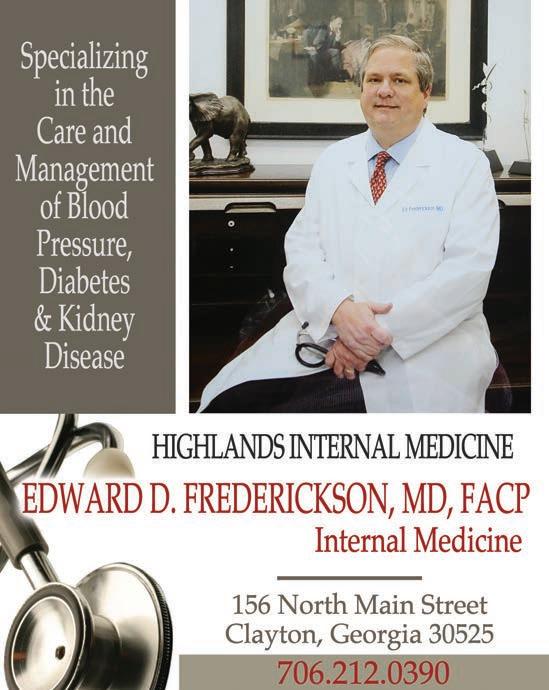
If your selected trustee resigns or becomes unable to make decisions, the trust company can serve as successor trustee. When it’s time to settle your estate, the trust company can handle the valuation, dispersion and re-titling of assets, pay off any debts and expenses, and complete any tax returns related to your estate. • Bill payment and recordkeeping – A trust company can keep up with all the trust’s bills (household maintenance, medical bills, etc.) and provide statements summarizing receipts, disbursements, and the value of assets within the trust. In addition to providing these practical services, a trust company may benefit you in a more intangible way. It’s unfortunate but true that, in many families, dividing up assets can cause conflict and bitter feelings. But when a trust company serves as trustee, it impartially administers distribution of the assets based on the instructions you’ve provided in the trust – helping minimize family disputes over inheritances.
If you ever feel like the complexities of wealth management and trust administration are getting to be more than you can handle – or perhaps more than you want to handle – consider contacting a trust company. You might find that it can make your life a lot easier.
Edward Jones Trust Company and Edward Jones, and their employees and financial advisors, are not estate planners and cannot provide tax or legal advice. You should consult your estate-planning attorney or qualified tax advisor regarding your situation. This article was written by Edward Jones for use by your local Edward Jones Financial Advisor. Edward Jones, Member SIPC Mary Beth Brody
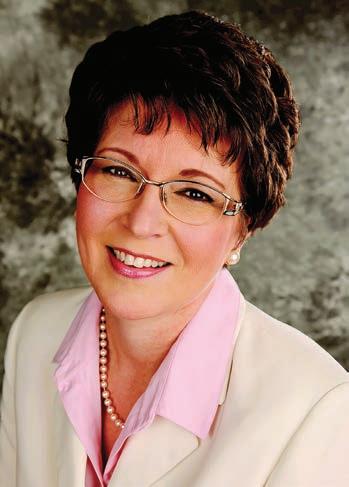
Discover more about the Highlands-Cashiers Plateau thelaurelmagazine.com


Sought-After Destination

The Greystone Inn is enjoying an explosion in its wedding and special events bookings, elevating it to the upper echelon of elegant resort destinations.
Lake Toxaway has drawn visitors for more than a century. Great names like Ford, Edison, and Rockefeller have meandered along its shores and taken in the pristine air and stunning views.
But The Greystone Inn is not just for celebrated dignitaries and notable personalities. It is a sought-after destination for individuals, friends, couples, and families for one-time special memory-making events, as well as annual, anticipated gatherings.
David Wright, The Greystone Inn’s catering and event manager, said 2021 has already been packed with weddings, family reunions, “adult” camps, corporate retreats, birthday parties, and anniversary events – “… a little of everything.”
He explained that people book a year ahead to ensure their spot at the historic location, which was built in the early 1900s as a private residence and summer home and then became a distinct inn for the public to enjoy in the 1980s.
“We are starting to fill up for 2022 for the larger events that require use of the entire hotel,” said Wright. “But we also do many intimate weddings, from a few people to a few dozen people. To our guests it’s like getting married at a family home. And, what is won-


derful about the restoration (2017-18) of the award-winning inn is that it honors the history but is updated for the way we live today.”
Wright said that besides its location, beauty, and history, people make The Greystone Inn their year-round go-to spot because it offers two restaurants and 30 guest rooms on the property, with each room “being slightly different and unique with its own character.”
Instead of approaching event catering as one-size-fits-all, Wright conveyed: “We treat each event as if the people are staying in our home. We offer menus as a guide on the website, but each event is custom and we consult with the chef about their specific needs and tastes.”
He added, “The Greystone Inn has welcomed guests and celebrated life’s milestones for over a century, and we are honored to be continuing that tradition.”
by Deena Bouknight

The Work In of the Workout
Our bodies have lessons for us, if we choose to listen.
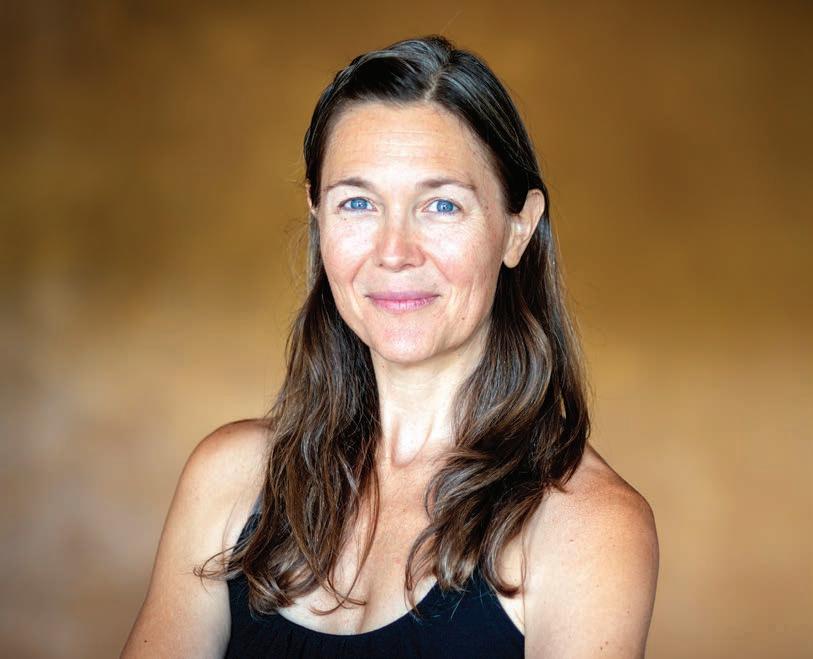


Iwasn’t very flexible as a child, but I studied dance and choreography.
I understood sequencing and timing. My body moved well from outside cueing and extrinsic sources, such as from an instructor or music.
The impulse to move from within didn’t awaken until I had injuries from two car accidents and mountain biking in my early 20’s. After trying insurance-based chiropractic adjustments (another outside influence) to relieve upper-back pain, I began to have rib displacement and residual indirect pain as a result.
At the same time, I found a warmed room and gentle guidance in the early days of Bikram yoga with a teacher in Jackson, Wyoming. Through yoga, I found independence in learning to heal my injuries myself. Not only did I recover fully, but I gained insight beyond the pain. This insight was a foundation for each next step on how to really care for my body. It is always evolving.
The knowledge we gain from healing an injury can change the trajectory of our life.
I went on to get a massage license and developed a trade to help others. However, this is true for any and all people that seek to learn, adapt, and grow as a person from challenge. This is the work “In” of the workout.
Our body is our tool to experience the journey of life. Pain and dysfunction can teach us what is balanced and what’s not. Postural and movement patterns are carried in the fabric of our soft tissues and can influence our emotions, and thus our thinking, energy levels, and even our relationships with others.
When we change our movement patterns, we can change our perceptions of life in the now. Surprising solutions and creativity emerge when we engage what is forgotten and ease what is struggling. The door swings open to an empowerment to heal.
You may have heard the phrase, “Real change is an inside job.” Injuries teach us and movement heals us.
Don’t let an injury stop you from living or from learning. All bodies tell a story.
by Ashby Underwood-Garner Yoga Therapist, Rolf Practitioner Owner of Yoga Highlands


Catch the Healing Attitude
Your mind can play an enormous part in healing your body. All you need to do is give it permission.



When speaking with patients, I often bring up what is perhaps the most important component of healing – Attitude! We discuss goals and the process of healing.
Sometimes it’s hard to put the onus on the patient and their own attitude toward the process they’re experiencing. The mind has immense control over the outcome.
Keeping in mind that healing is a journey, not a destination, I try to help my patients digest this somewhat difficult concept because it seems to be a big reason why so many seek a “quick fix” and turn to drugs, injections, and even surgery before exploring other options.
These days, we have so many options to feel better…and here comes the big But …. whatever you choose, you really need to participate in this process!
You need that attitude that can help any treatment succeed. Yes, it’s your body, your condition, and your process to heal. My job is to take the helm as needed, especially in the beginning of the process. Putting the body and the patient on the right track is my job and what I am trained to do.
Your job is to jump on board and be an active participant, understanding the steps necessary to eventually perpetuate the skills that you’ve learned in order to keep your body in a healthy state. I like to think of it as a partnership: at first, I do most of the work and, as you progress, you become the leader and I have a diminishing role.
If the healing process goes according to plan, you will be well on your way to feeling great in a few weeks to a few months. In the instance that your healing is not progressing, we find the next best step and, if needed, refer you to other approaches to get you to your goals most efficiently.
Again, through all this, your attitude is of the utmost importance to get you to your ultimate outcome of better health and function.
Have you heard the term “psychosomatic”? This is the mind-body connection and it is powerful, especially when the body needs some magical internal impetus to move the healing process along.
Staying on the path of healing takes patience, persistence, and often some courage. There may be setbacks, changes, or obstacles along the way, but this is normal. Healing is so dynamic and sometimes unpredictable.
As you seek healing through caring and outcomes, you have to be the captain of your ship and catch that healing wave! Engage your mind, set your goals, choose your healthcare provider wisely, and be a participant in your journey!
by Dr. Sue Aery Aery Chiropractic & Acupuncture


Distinctly Fox
Architect Jim Fox’s grandson is chronicling and restoring his intriguing buildings, which remain unmistakable landmarks across this corner of Western North Carolina.

Many residents and visitors to the plateau do not realize that they may be passing, staying in, or even owning a Jim Fox original. James (Jim) Fox, who died in 2017, was a native of Indiana but designed and built creative, modernistic homes throughout the United States before starting his own firm in 1969 as the Highlands area’s first modernist design/build firm. Fox’s homes exist throughout Highlands and Cashiers, and each is dramatic and distinct.
His grandson, 21-year-old Ryan Karcher, resides in the Highlands area and is both a general contractor and a drone photographer (Karcher Aerial Imaging). His goal is to honor his grandfather’s legacy by completing Fox’s biography. However, in a twist of irony, Karcher has in recent years had the privilege of working on some of his maternal grandfather’s homes – to renovate and update them.
“I remember going to a few of his homes as a kid, and he would show me around and I would see sketches in his office,” said Karcher. “And now I’m helping in a small way to preserve them.
“His houses definitely stand out – they’re different. Some people love his work, and others don’t like the designs at all. But one thing is certain – you know it when the house is a Jim Fox design.”
One Jim Fox house, dubbed “Long House,” is located in Wildcat Cliffs and owned by Jim Sweat and Peter Almerico.
“We fell in love with our Jim Fox home the first minute we stepped through the front door,” said Sweat. “The huge two-story windows, revealing spectacular mountain views was a real plus; however, the unique design of the house, the wide open spaces and sunken fire pit with the huge open fireplace was what really made us fall in love with this special house.”
Karcher, whose goal is to photograph all existing, local Jim Foxdesigned homes, explained, “He liked his fireplaces to be the focal

point, and to have lots of windows and angles.”
Sweat and Almerico discovered the circa 1973 house after it had been sitting vacant for over five years. “It was in dire need of many repairs and careful updating to ensure the Jim Fox design stayed intact,” said Sweat. “The kitchen was the main element that was totally outdated. We waited a couple of years before we decided on the right design because it was important for us to stay true to the original architecture.”
Gary Hitchcock and Wade Martin’s Upper Divide Road 1980s house is “pure Jim Fox with an abundance of expansive glass openings, wood beams, and struts, and his ubiquitous obtuse angles,” said Martin. “Day and night the strategically positioned clerestory windows draw natural light inside, whether by sun or moon.” These owners as well were determined to maintain the structure’s true Jim Fox essence while the house was renovated.
Another goal of Karcher’s is to peruse all of his grandfather’s existing architectural designs, rolled in tubes, and include some in a book – but then also choose one for the construction of his own home. “As a kid, I wanted him to design a house for me. I would sit by him while he was working sometimes.”
One of Karcher’s cousins, Joey Stiles, is following in Jim Fox’s footsteps and is away at college studying architecture and design at the University of Oklahoma.
Karcher’s mother, Kristin Fox, who resides in Franklin, remembers her father overseeing each design’s construction. “He knew his designs were difficult to build,” she said. “He was on site and ready to assist the builders and keep the project flowing smoothly.”
Kristin Fox was one of Jim Fox’s three children.
She also shared: “Architecture was always a part of our lives growing up. Most of the time my dad had his office at our home, so we were always around his work; we hung out in his office, and he often took us to visit his houses while they were under construction. He taught us about great architects, especially organic architects. But of course to us my dad was the greatest architect. My dad even designed the coolest playground for Highlands School, built when my sisters and I went to school there.”






Despite Jim Fox’s distinction as an architect, Karcher said, “He didn’t let business or money or notoriety change his personality. He showed up in jeans … casual, no nonsense. He wasn’t showy, just confident and knowledgeable.”
Kristin echoed her son’s sentiment. “No matter what my dad was doing, how busy he was, he always had time for us; he was always there for us – to hold our hand when we were scared, give us a hug when we needed one, share a laugh, or just talk. I could say many things about my dad, but he was a great man. He was my hero my entire life and my memories of him keep his spirit alive for me today. He encouraged me to dream big and work hard to fulfill those dreams.”
Available on Amazon.com, New Old House: Designing with Reclaimed Materials, by Ed Knapp, is one book that includes photography of Fox-designed homes.
by Deena Bouknight photos by Ryan Karcher
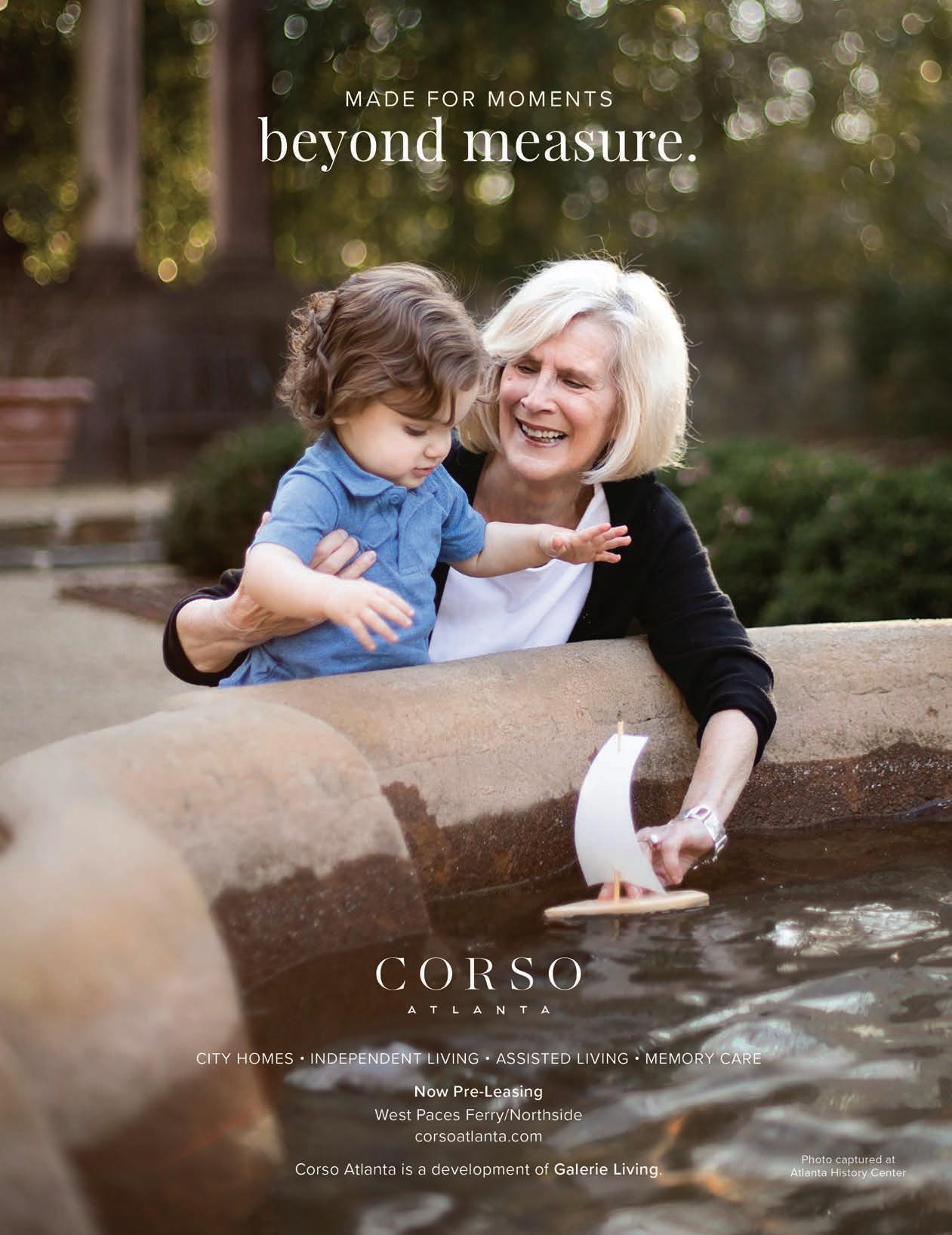
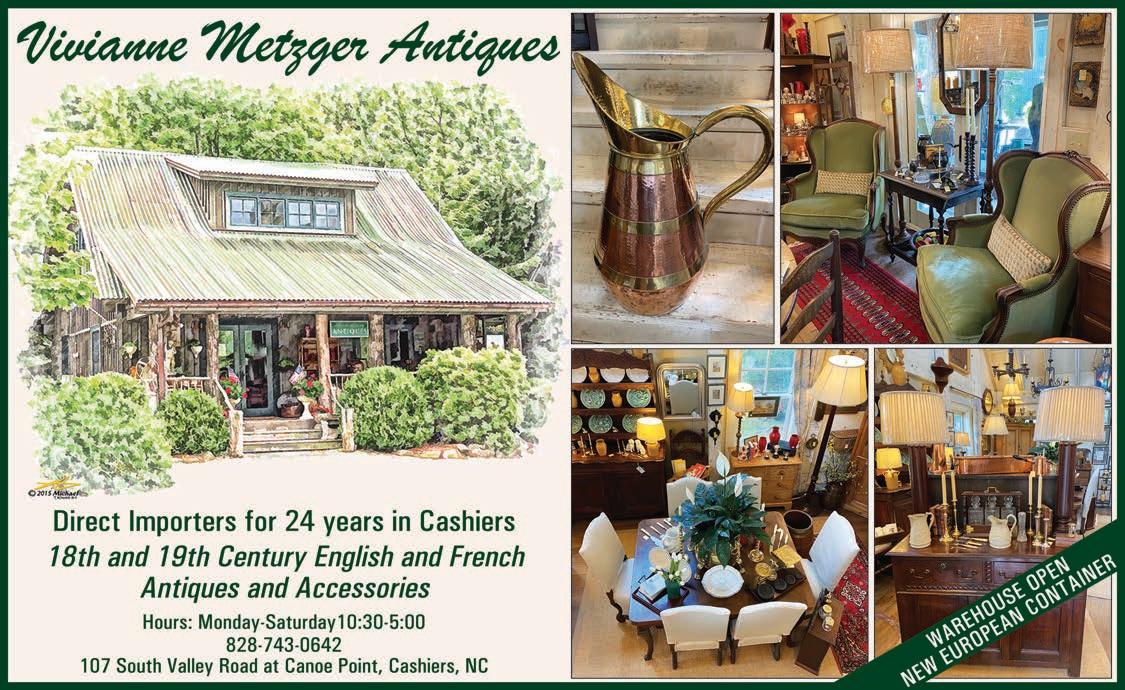

ACCOMMODATIONS ACCOMMODATIONS


BEAUTY
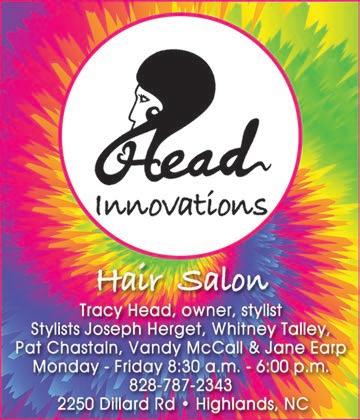
CLEANING CABINETRY
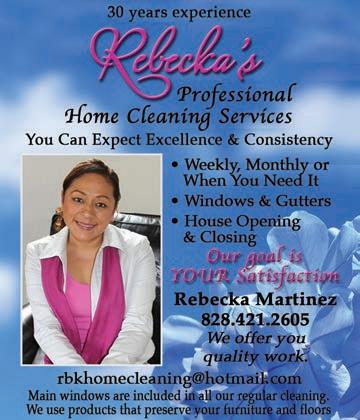

CONSTRUCTION BEAUTY


CLEANING

HOME MONITORING

HOME DECOR PICTURE FRAMING
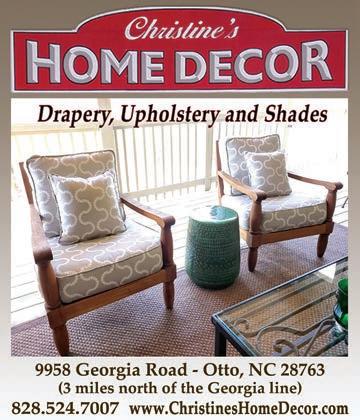

REAL ESTATE
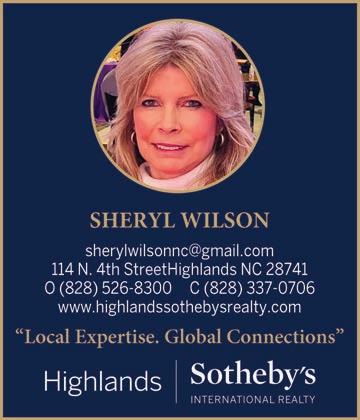
ROOFING REAL ESTATE

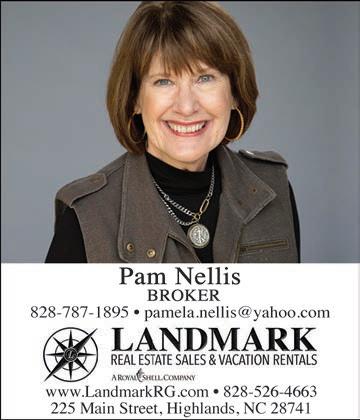
SERVICE PRINTING

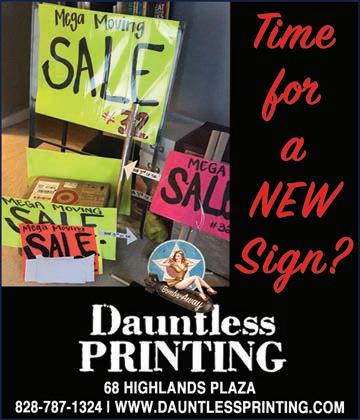
REAL ESTATE



GIVING BACK
Pages 212 - 223

One Straw at a Time
For local student Maddie Newsom, the uphill struggle against plastic pollution demands the attention of everyone.

Twelve-year-old Maddie “Moon” Newsom is determined to make a difference in the world.
As an ambassador for POP (Plastic Ocean Project), she’s spreading the word from Wilmington (home of POP) to Western North Carolina (her classmates at Summit Charter School), to followers in the Virgin Islands, and beyond.
Her mission: Reverse the plastic pollution that’s destroying life in our waterways, coastal zones, and oceans. The plastic nightmare is not just somewhere else in the world. It’s right here in North Carolina and spreading across the North Atlantic.
POP is addressing this problem with education, outreach initiatives, student-led research, and active plastic removal/cleanups. Ambassadors like Maddie are young volunteers who care about the planet.
Maddie’s been campaigning for “no plastic straws” since she was 9 and promoting sales of silicone-tipped stainless steel straws. All donations go to POP.
She says, “My friends help me protect the environment and promote POP’s mission.”
She’s made a big difference already, one friend and one straw at a time.
Maddie says, “People say, ’Oh, it’s just a straw. What harm can a straw do?’ But straws and other small plastic pieces go into city sewers, landfill, creeks, rivers, lakes, and ultimately oceans. Plastic doesn’t break down. And if fish, thinking it’s plankton or food, ingest the plastic, it will turn into little micro pieces which stay in their

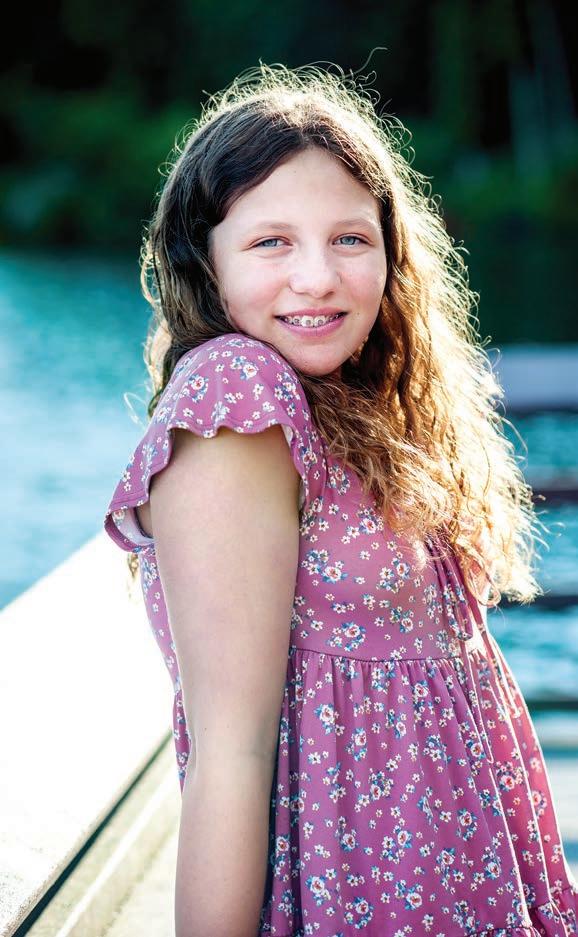
Maddie Newsom
systems. If they are caught and we eat them, then the plastic is stuck forever in us.”
That can’t be good.
So how do we turn this around? Maddie gives us her top five solutions to practice every day: 1. Skip the straw. 2. Dispose of your trash in an environmentally protective way (pack it in and pack it out). 3. Use your own water bottle instead of plastic. 4. Shop with cloth grocery bags . 5. When possible, avoid buying food in plastic containers.
One of Maddie’s heroes is Mark Delstanche, yachtsman, world explorer, and environmentalist. He has launched a mission to help assess the plastic problem in the North Atlantic by attempting to row a small craft (named Peg) from New York to London. Along the way he’s collecting samples, photographing floating pods of plastic, and making scientific observations.
Maddie, at the invitation of Bonnie Monteleone, creator of POP, interviewed him before he left on June 15. Follow along with his voyage and Maddie’s interview at facebook pages: square peg; plastic ocean project; and Maddie’s Mission.
And next time you want a fountain drink, follow Maddie’s advice: Just Skip the Straws!
by Donna Rhodes








